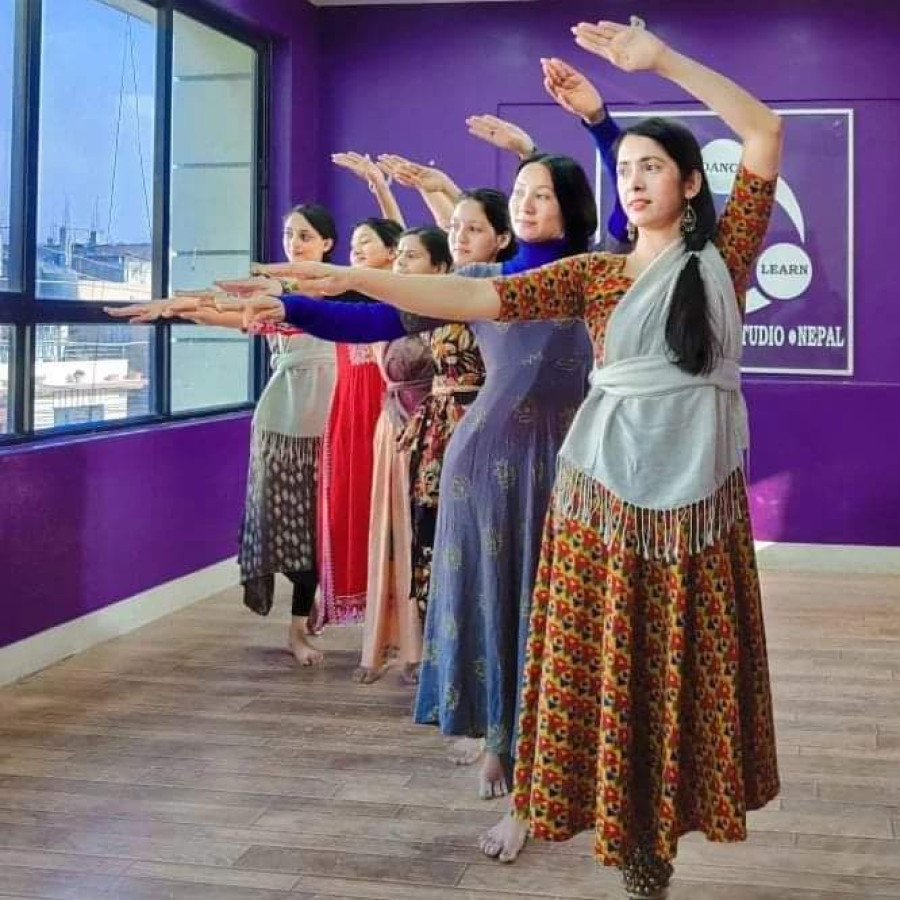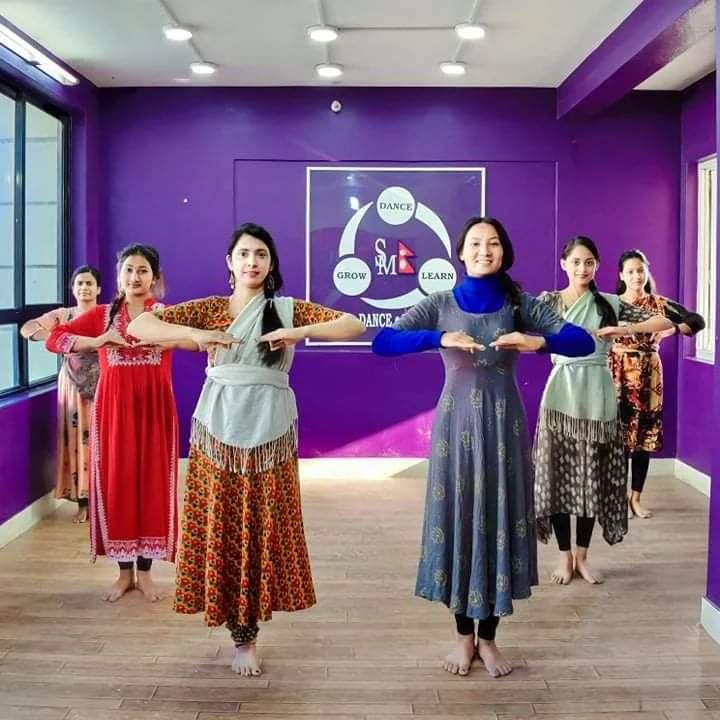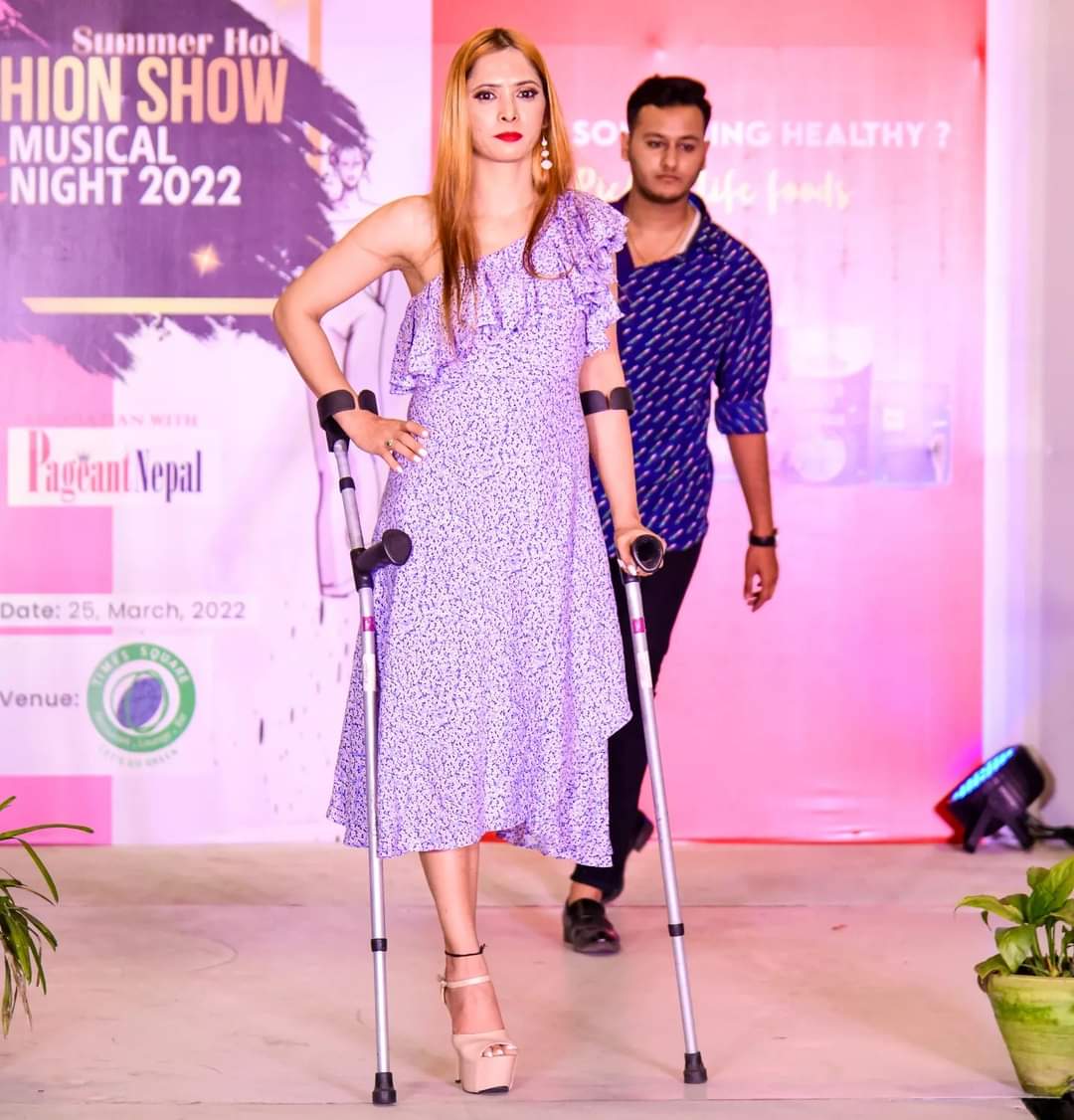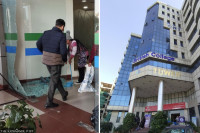National
She lost her leg. But that didn’t stop her from standing tall
Sita Subedi lost one leg at 12. She persevered to become an accomplished Kathak dancer.
Anup Ojha
Sita Subedi was just 12 when her parents were told by the doctor that she had “some serious problem” in her left leg. She was a seventh grader then. More than her academics, she was known for her skills in something else—dancing.
However, she was unaware that cancer was growing in her left leg.
Slight pain that she felt while riding bicycle gradually became unbearable. Her parents took her to the doctors who said the only way to save her was amputation. She lost her left leg up to thigh.
Life suddenly changed for a child whose dream was to become a dancer. She was bedridden for months.
“I had a very strong desire to live,” says Subedi, who is now 37. “Despite losing my leg, I did not lose purpose in life. I was determined to become a dancer and singer.”
Her perseverance paid off. She is an accomplished dancer now—a Kathak dancer. She is also a dance instructor. She teaches Kathak to half a dozen students three times a week at an academy in Imadol, on the southern outskirts of Lalitpur.
For many in life, they need someone to give a leg up, but Subedi does not just stand on one leg; she gives mesmerising performances that could leave the audience spellbound.
“This journey has not been easy though,” she said in a recent interview with the Post.
Discrimination started from her own family members. Everyone had but one question: what can she do in her life after losing a leg?

But then came the mother to the rescue, she says.
“My mother was very supportive. My mother convinced my father that I should resume school as he was initially not keen on sending me out. He feared the way people would look down upon me would dent my confidence,” she recalls.
The first day in school after a gap of a year on her crutches is still etched in her memory.
“I found myself surrounded by 1,000 students during the morning assembly,” she recalls. “I felt I was different from them and everyone would sympathise with me which I really didn’t like.”
The entire first year in school after amputation, she sat on the bench alone—no one wanted to share the bench with her.
“My friends thought they would be infected,” she says. “Those days were hard. But gradually I earned friends. But life was not easy. I wanted to do something, but there were barriers galore, especially because I was not like the others.”
She took the School Leaving Certificate exam in 2002 from Janaki Higher Secondary School, Meghauli. She was among the 18 out of 70 who appeared in the exam to pass. She was one among the four girls who managed to cross the so-called iron gate.
After her SLC, she wanted to pursue her education and learn dance and music.
“When I went to a renowned dance institute in Bharatpur, I came face to face with a rude shock. The instructor said I could not dance because I had only one leg,” she shares.
Subedi says the society still does not understand the fact that disability is unpredictable and can happen to anyone at any point of time in life.
“People with disabilities do not need sympathy, they just need an environment where they can grow and make a space for themselves,” she says. “I was determined to break this stereotypical mindset that people with disabilities have to beg on the streets, as society expects them to do.”
She got her Intermediate level education from Birendra Multiple Campus, Bharatpur. Later, a humanitarian organisation brought her to Kathmandu in 2005 to impart vocational training on “life skill development”.
“It helped me get a positive outlook on life, and after the course I became much stronger and more dedicated,” said Subedi.
Subedi realised that only education could pave more avenues for her. She joined Padma Kanya Campus in 2015. Her brother Nilakantha Subedi, who is in Dubai, helped finance her studies.
The same year, she enrolled in Kalanidhi Indira Sangeet Mahavidyalaya, which is affiliated to Pragya Sangeet Samiti Allahabad India, to learn Kathak.
While she studied music and Nepali at the college, she mastered her dance skills at Kalanidhi.
“I still remember how passionate she was about learning. She was cut above the rest,” recalls Dhana Bahadur Goplai, a lecturer of eastern classical music at Padma Kanya Campus, who is retired now.
But things didn't go as she wished. There was a break in her learning at Kalanidhi, as the instructor said Kathak is a dance form for which one needs a “perfect body”, meaning Subedi with one leg was not eligible.
“So I decided to open my own dance school,” says Subedi. “Since I had learned Kathak for five years under Rabi Manandhar [Kathak instructor and still taking classes under him], I thought I should give opportunities to those who want to learn the dance but do not know where to go.”
Despite being registered, the Natyashori Nrityangan Academy could not come into operation because of the coronavirus pandemic.
She, however, has been teaching dance at her friend’s Samir Dance Studio.
“I will soon open my own Kathak dance teaching studio,” says Subedi.
Before the pandemic, Subedi was invited to perform Kathak in South Korea to mark the international day of disabled persons on December 3 in 2019.
“That was a big platform for me. I got a huge exposure,” she says.
Rahisha Timalsina, 19, one of her students, says Subedi is a source of inspiration for many.
“Her moves are smooth. She is good at both the practical and theatrical forms of dance,” said Timalsina, who is a teacher at a private school in Lalitpur. “Disability has not stopped her from pursuing her goals. She is a motivation for all of us. She should be a motivation for society.”
Apart from being a dancer, she is a singer as well and a fourth semester student of Master of Arts (music) from Tribhuvan University after completing her master’s in Nepali literature from TU.
Subedi says for a person like her, born in a lower middle class family in Meghauli-9, Chitwan, the difficulties were immense, especially after she lost her leg. She is the oldest among four siblings–one brother and two sisters.
Subedi’s story reminds many of a Bollywood biographical movie “Nache Mayuri” made in 1986, starring Sudha Chandran. Chandran lost her leg in an accident and got amputated, but she went on to become an accomplished Bharatnatyam dancer.
“Sukanya Waiba, litterateur Parijat’s sister, had recommended the movie to me,” she said.
Since Chandran had her leg amputated from the knee, she could use an artificial limb, which is not possible in case of Subedi who has to perform her dance just on one leg.
“But Sudha Chandran has remained my inspiration,” she said.
On March 25, Subedi surprised the audience when she walked the ramp on her crutches during the Summer Hot Fashion Show and Musical Night 2022 held in Kathmandu, sharing the space with 21 professional Nepali models.

Asked if she wishes to do modelling as well, Subedi just chuckled.
“Actually I thought it would be a platform to demonstrate how people with disabilities are equally capable,” she said. “Walking on the ramp in front of the audience also helped boost my confidence.”




 7.12°C Kathmandu
7.12°C Kathmandu.jpg)













%20(1).jpg&w=300&height=200)

